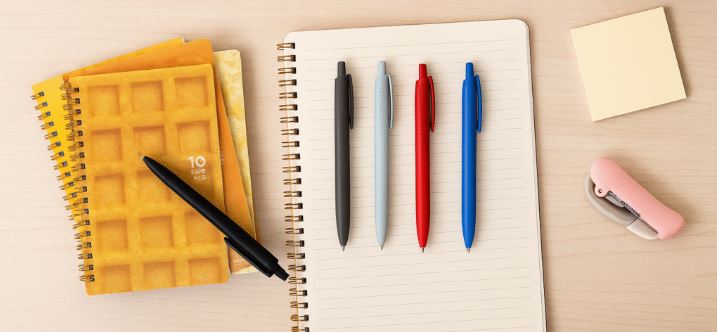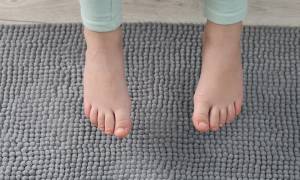Introduction: The Five-Minute Test
Open your calendar, set a five-minute timer, and just look at your desk. Don’t tidy it—observe it.
Which items help you start work faster? Which ones force you to pause, hunt, or sigh? Most “productivity problems” begin and end here, in the little frictions we tolerate every day: a pen that skips, files that hide, lighting that strains your eyes. Fix the frictions and you change the day.
This piece is written for people who care about performance and aesthetics—knowledge workers, designers, students, and anyone who believes tools shape outcomes. We’ll walk through a practical reset for your space, why great tools matter, and how to choose them. Along the way, we’ll link to curated picks so you can act immediately, including a short list of ballpoint pens that have earned trust through daily use.
Why Your Desk Quietly Decides Your Day
Visual noise taxes attention. A crowded field of view—loose cables, mixed containers, random colors—forces tiny micro-decisions before you even begin. Reduce the noise and your brain has fewer reasons to wander.
Friction compounds. Two minutes spent finding a contract, thirty seconds shaking a pen back to life, ten seconds closing a noisy clicker in a quiet meeting—all small on their own, but large in sum. The most productive desks aren’t minimalist for style; they’re minimalist for speed.
Aesthetics have utility. Beauty isn’t fluff. Cohesive materials, pleasing textures, and good proportions create a subtle “approach motivation.” You sit. You start. You keep going.
Principles Before Products: Choose Beautiful and Functional Office Supplies That Earn Their Place
One job done well. Multitools are useful, but only if they reduce total clicks, swaps, and mental switching.
Consistency beats variety. Repeating materials (wood with wood, matte with matte) lowers visual noise and looks intentional.
Reach over store. The closer an item is to where you use it, the less your brain context-switches.
Invest, don’t accumulate. A tool you love and keep for years is cheaper than three “almost right” purchases.
When you choose beautiful and functional office supplies, you’re not just decorating—you’re engineering a smoother, more productive workday.
A Three-Step Desk Reset (That Actually Sticks)
Step 1: Empty → Edit → Map.
Remove everything. Edit aggressively (keep, relocate, remove). Then map where actions happen: writing zone (dominant hand side), capture zone (sticky notes/Inbox tray), reference zone (file stand or vertical sorter). Label the zones if you’re the kind who forgets in week two.
Step 2: Unify the look.
Pick a palette (e.g., walnut + charcoal + cream). Match pen cup, tray, and file stand. Swap random branded mugs for one intentional holder. The goal isn’t Pinterest-perfect; it’s repeatable.
Step 3: Add the force multipliers.
- Lighting: a dimmable, pivoting lamp reduces eye strain and keeps late sessions humane.
- Capture: one tray labeled “Inbox Today” beats five piles labeled “Someday.”
- Writing: keep two dependable pens within reach and at least one backup in a drawer.
Why the Reliability of a Good Ballpoint Pen Still Wins in 2025
Digital tools are brilliant—until they aren’t. When Wi-Fi hiccups or a thought arrives mid-call, pen and paper remain undefeated. Three reasons:
- Reliability under pressure. Signatures, quick annotations, labels—moments you can’t afford a skip or smear.
- Comfort for long sessions. Balance, grip texture, and weight distribution matter as much as ink.
- Longevity and familiarity. Refillable pens build muscle memory; your handwriting literally improves when the pen stops fighting you.
That’s why the reliability of a good ballpoint pen isn’t nostalgia; it’s an operational advantage.
5) How to Choose a Ballpoint (Fast)
- Tip size: 0.5 mm for tighter notes and smaller planners; 0.7 mm for bolder, smoother lines.
- Grip: if your fingers creep toward the tip, look for a defined, slightly tacky grip.
- Click vs. twist: clickers are one-handed and quick; twist mechanisms feel calmer in meetings.
- Refills: standard, easy-to-find refills keep lifetime cost low.
- Paper: if you use toothy recycled stock, prioritize smooth, low-viscosity inks.
Scenario Picks: 5 Ballpoints That Earn a Permanent Spot
All available from Paper Whisper’s curated collection.
1) Uni Jetstream Multi-functional 4&1 (Metal Body)
Best for: color-coding power-users and project leads.
Why it earns its keep: four ink colors + a mechanical pencil in one balanced metal body means fewer tool swaps and cleaner notes. Jetstream’s low-viscosity ink is famously smooth on cheap office paper and premium journals alike.
Reliability angle: consistent lines, minimal smudge, and one-hand color changes during fast meetings.
2) Zebra bLen 0.5 mm
Best for: everyday note-taking without the “scratch.”
Why it earns its keep: the anti-vibration design dampens micro-rattles you don’t notice until they’re gone. The result is calm, steady writing and cleaner letterforms.
Reliability angle: pocketable, affordable, and far more dependable than disposable freebies.
3) Pentel Calme 0.5 mm
Best for: quiet offices and marathon minutes.
Why it earns its keep: a whisper-soft click and comfortable, grippy section make constant pausing and re-clicking less distracting to you—and everyone else.
Reliability angle: controlled ink flow + ergonomic grip = fewer hand cramps during dense note sessions.
4) Zebra Filare Wood (Click Type)
Best for: the tactility nerd and gift-giver.
Why it earns its keep: a warm wood body that feels like an object, not a commodity. It elevates the desk without shouting.
Reliability angle: smooth, even flow with a mechanism that feels deliberate—no wobbly click.
5) Pilot TIMELINE Eternal
Best for: premium feel and presentation.
Why it earns its keep: distinctive retracting design, refined weight distribution, and a finish that reads “considered.”
Reliability angle: a statement piece that still writes like a tool, not jewelry.
Want to browse or compare refills? Explore the reliability of a good ballpoint pen across the full collection.
Small Upgrades with Outsized Impact (Beyond Pens)
- A single-tier file stand keeps today’s contracts vertical and visible—far better than burying them in drawers.
- A pen cup you’re proud of prevents the “pen migration” that scatters tools across the desk.
- A soft-edge desk mat defines your work zone, quiets typing, and makes writing feel smoother.
- Cable clips end the eternal hunt for a charging cord sliding behind the desk.
If it lives on your desk, it should look like it belongs there. Start with beautiful and functional office supplies and you’ll feel the difference on day one.
The One-Week Desk Reset Challenge
Day 1 – Empty & Edit: remove everything; put back only what you used last week.
Day 2 – Map Zones: define writing, capture, and reference areas with trays or a mat.
Day 3 – Lighting: adjust angle and brightness; test warm vs. cool for your tasks.
Day 4 – Paper Flow: add a single “Inbox Today” tray; empty it before you leave.
Day 5 – Writing Tools: pick two daily drivers + one backup from the list above.
Day 6 – Aesthetic Cohesion: align colors/materials for holders, trays, stands.
Day 7 – Review: what still creates friction? Replace it with a tool that doesn’t.
Seven days, small steps—measurable calm.
Quick Checklist (Print-Friendly)
- I can start writing within 3 seconds of sitting down.
- Today’s documents are visible, not buried.
- Lighting does not cause glare on paper or screen.
- Two reliable pens are within reach; refills are in a known spot.
- My desk shows a coherent palette and material choice.
- There is one capture point for new inputs (tray or notebook).
- Nothing on my desk is there “just because.”
Conclusion: Make Your Tools Do the Quiet Work
A great desk doesn’t try to impress you every time you look at it. It gets out of the way. It makes starting easier and continuing inevitable. That’s what the right gear does: it removes reasons to stop.
If you’re ready to trade friction for flow, begin with a few beautiful and functional office supplies and pick a daily-driver from the reliability of a good ballpoint pen collection. Upgrade the tools, and the habit change follows.
Five minutes. One decision. A very different workday.
Read More: Your Topics | Multiple stories: A Comprehensive Guide












